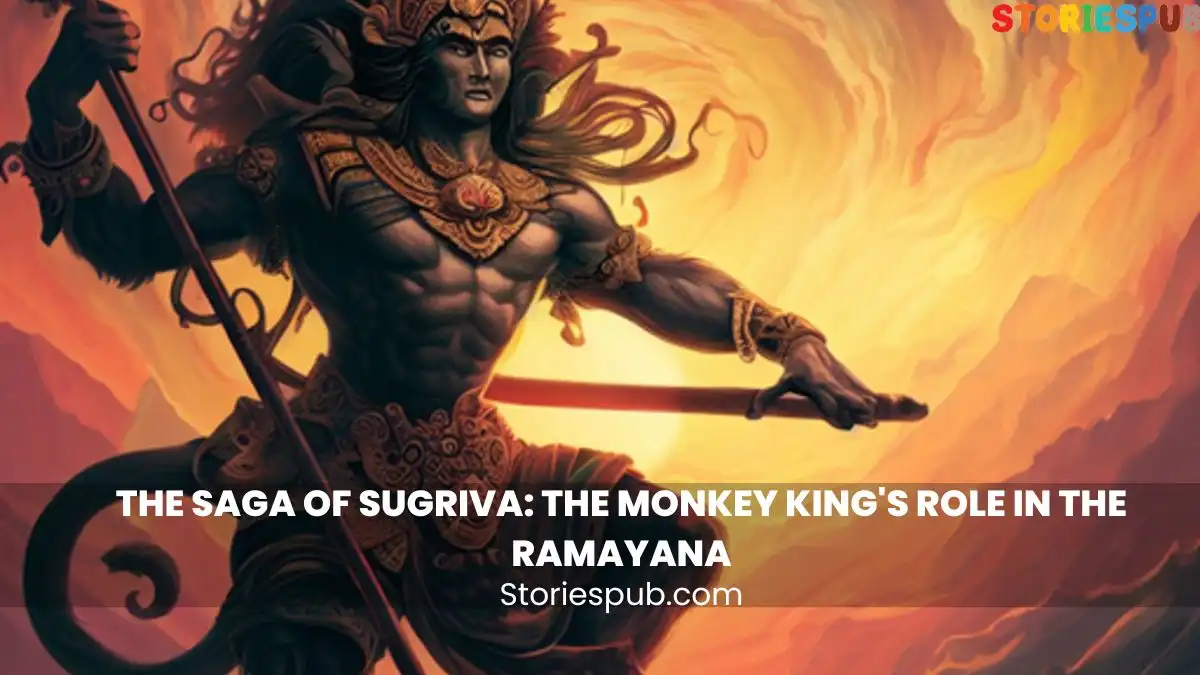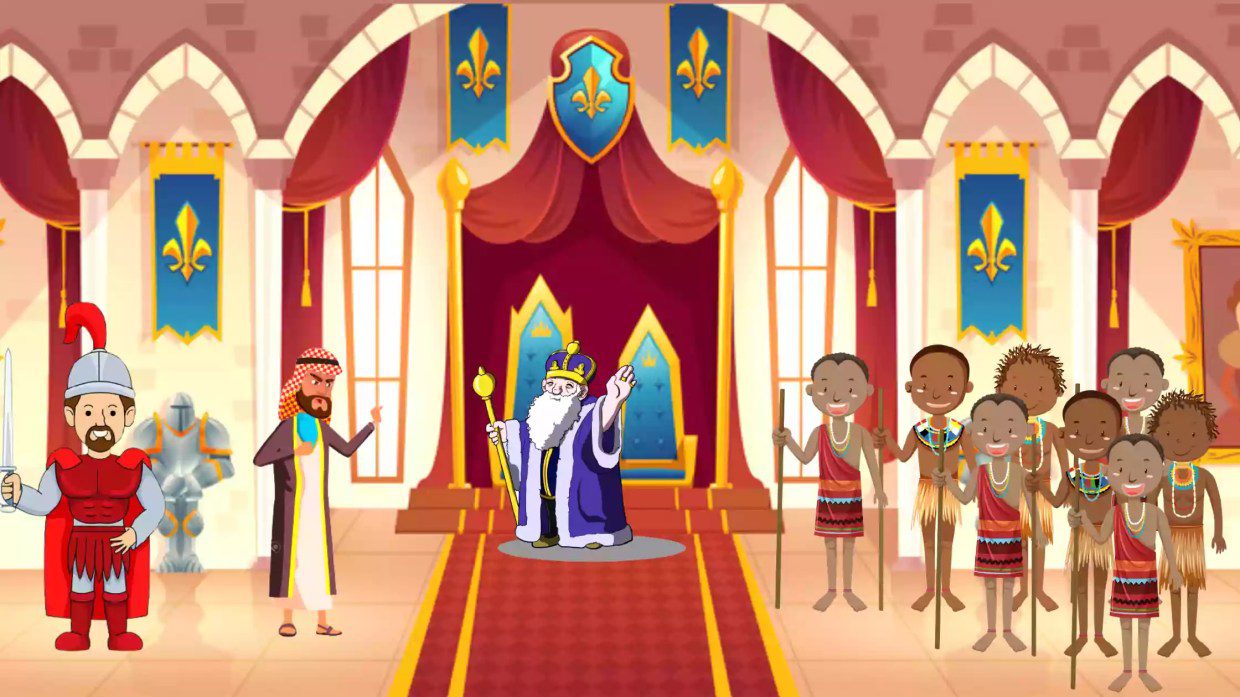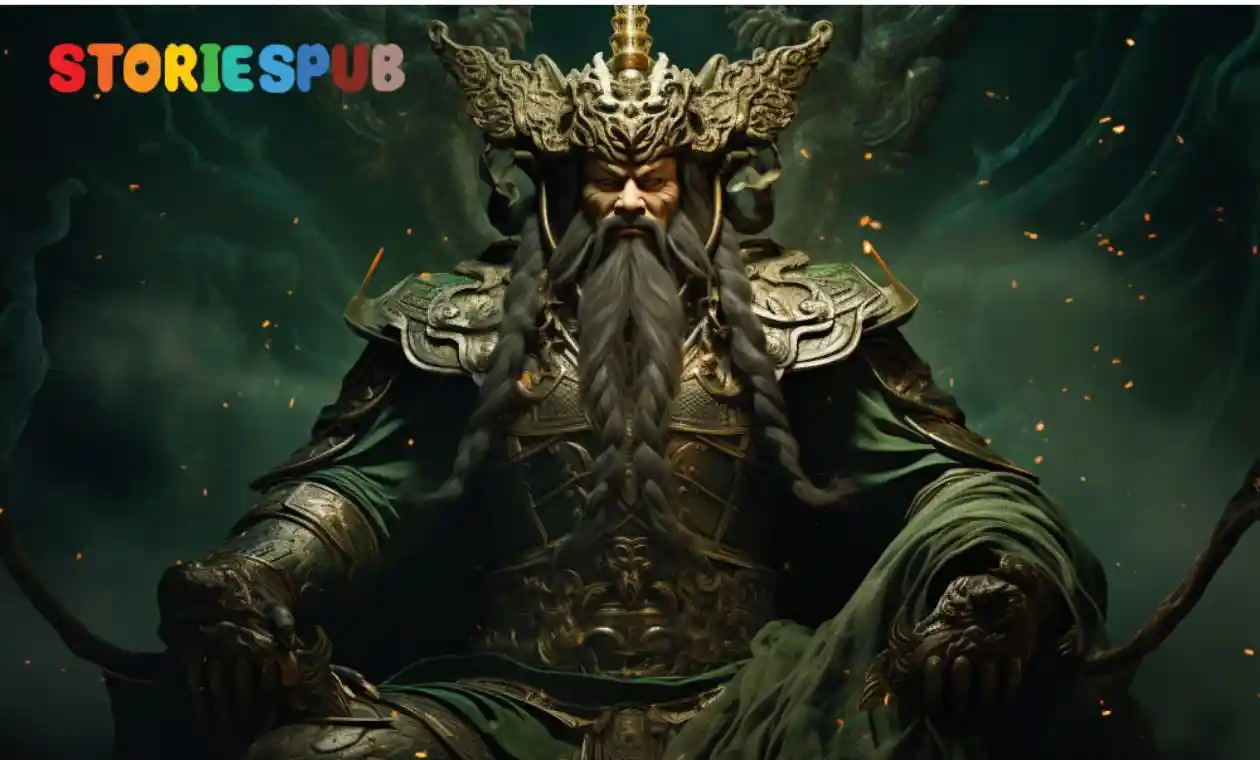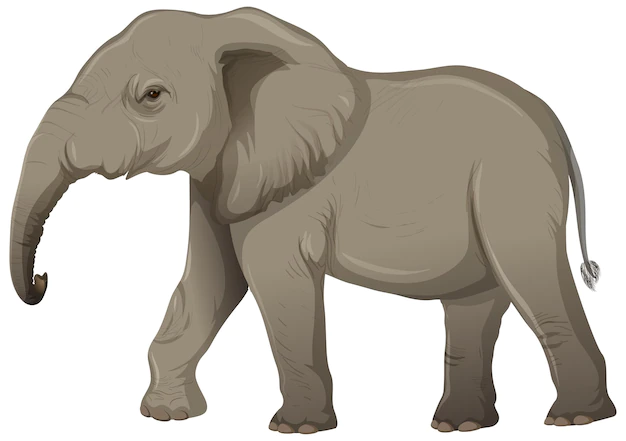Summarize this Article with:
Sun Wukong: The Monkey King’s Legendary Journey

Sun Wukong, also known as the Monkey King, is a central character in the classic Chinese novel “Journey to the West,” written by Wu Cheng’en during the Ming Dynasty. As a legendary figure in Chinese mythology and folklore, Sun Wukong has captivated the imagination of generations with his extraordinary powers, mischievous nature, and unparalleled wit. He is often depicted as a rebellious trickster, challenging the authority of the heavens and striving for personal growth and redemption.
Sun Wukong’s importance in Chinese mythology and folklore lies in his representation of resilience, perseverance, and transformation. As an embodiment of human desires and follies, he highlights both the weaknesses and strengths of human nature. Despite his rebellious streak, Sun Wukong evolves into a compassionate and loyal companion to the Buddhist monk Tang Sanzang (also known as Tripitaka), ultimately helping him accomplish his mission to retrieve sacred Buddhist texts from the West.
Over time, Sun Wukong has become a symbol of resistance against oppression and a champion of justice. His story has been interpreted as an allegory for the struggle between individualism and conformity, as well as the pursuit of spiritual enlightenment. The Monkey King’s tale transcends the boundaries of Chinese culture and has found a place in the folklore and mythology of various East Asian countries, with each adaptation adding unique elements and perspectives to his legend.
Throughout history, Sun Wukong’s story has been retold and reinterpreted in countless ways, including opera, dance, literature, and more recently, film and television. This enduring popularity attests to the character’s universality and the enduring appeal of his journey from a mischievous trickster to a wise and powerful protector. Today, the Monkey King remains an integral part of Chinese culture, symbolizing the indomitable spirit of adventure and the human capacity for growth and transformation.
The Origin of Sun Wukong
The origin of Sun Wukong, the Monkey King, is a fascinating tale that combines elements of myth, fantasy, and spirituality. It all begins with a magical rock situated atop the Mountain of Flowers and Fruit, a mystical paradise located near the Eastern Sea in Chinese mythology.
Over countless ages, the rock absorbed the essence of heaven and earth, the sun, and the moon. As it was exposed to the powerful energies of these celestial bodies, it started to transform, taking on a life of its own. One day, a miraculous event occurred: the rock split open, giving birth to a stone egg, which in turn produced a stone monkey.
The stone monkey’s first act was to bow towards the four cardinal directions, and as he did so, a beam of golden light shot forth from his eyes, illuminating the sky. This remarkable display caught the attention of the Jade Emperor, the ruler of the celestial realm, who sent two of his generals to investigate the source of the light.
Meanwhile, the stone monkey joined a troop of monkeys living on the Mountain of Flowers and Fruit. Demonstrating his intelligence, bravery, and leadership qualities, the stone monkey eventually earned their respect and was crowned the Monkey King, or Sun Wukong.
As Sun Wukong continued to grow in wisdom and power, he yearned to learn the secrets of immortality. He left his kingdom and sought out a Taoist sage named Subhuti, who taught him the art of the 72 transformations, allowing him to change his form and size at will. Sun Wukong also learned how to fly at incredible speeds, covering thousands of miles in a single somersault, a technique known as the “cloud-somersault.”
In his quest for power and immortality, Sun Wukong managed to outsmart the gods, steal their magical peaches and elixirs of immortality, and ultimately became immortal himself. His cleverness and fearlessness made him a formidable character, setting the stage for the grand adventure in “Journey to the West,” where Sun Wukong would learn valuable lessons in humility, redemption, and self-discovery.
The powers and abilities of Sun Wukong
Sun Wukong, the Monkey King, is renowned for his exceptional powers and abilities, which play a crucial role in his adventures throughout “Journey to the West.” His unique set of skills make him a formidable character in Chinese mythology, and these powers include:
Immortality: After consuming the magical peaches and elixirs of the gods, Sun Wukong gained the power of immortality, making him invulnerable to aging and disease.
Superhuman strength: Sun Wukong possesses incredible strength, allowing him to carry heavy loads, defeat formidable opponents, and perform remarkable feats.
The 72 transformations: Through the teachings of his Taoist master, Subhuti, Sun Wukong mastered the art of shape-shifting, enabling him to transform into any living creature, object, or even elements like water or fire. He can also change his size, becoming as tiny as an insect or as massive as a mountain.
Cloud-somersault: Sun Wukong acquired the ability to perform the “cloud-somersault,” which allows him to fly incredible distances at great speeds, covering 108,000 li (approximately 34,000 miles) in a single leap.
Hairs that transform: Sun Wukong can pluck hairs from his body, blow on them, and transform them into clones of himself or any object he desires, such as weapons, animals, or even buildings.
Expert martial artist: Sun Wukong is a highly skilled fighter, proficient in a variety of martial arts, which he uses to overcome enemies and protect his companions during their journey.
Invulnerability: Sun Wukong’s body has become impervious to most weapons, and even when injured, he can heal quickly. The only vulnerability lies in the top of his head, where he can be subdued by a magical headband that tightens when a specific mantra is chanted.
Ruyi Jingu Bang: The magical staff is Sun Wukong’s primary weapon, which he acquired from the underwater palace of the Dragon King. The staff can change its size according to Sun Wukong’s will, making it a versatile and powerful weapon.
Wisdom and cunning: Sun Wukong possesses a keen intellect and a cunning nature, which often allow him to outwit his adversaries and overcome challenges throughout his journey.
Protective spells: Sun Wukong has learned various spells and incantations from his master Subhuti, which can be used for protection, exorcism, and other purposes.
These extraordinary powers and abilities make Sun Wukong an indispensable companion to Tang Sanzang in “Journey to the West,” as they face numerous trials and tribulations in their quest to retrieve the sacred Buddhist scriptures.
Sun Wukong Relationship and Comparison with Hindu god Hanuman
Sun Wukong, the Monkey King from Chinese mythology, and Hanuman, the monkey deity from Hindu mythology, share some striking similarities, leading to comparisons and speculations about their relationship. Both characters play significant roles in their respective cultures, and they possess extraordinary abilities and virtues. However, it’s important to note that they originate from different cultural and religious backgrounds and have distinct stories and characteristics.
Similarities between Sun Wukong and Hanuman:
Monkey form: Both Sun Wukong and Hanuman are depicted as monkey-like beings, representing intelligence, agility, and resourcefulness.
Supernatural abilities: Both characters possess incredible strength, shape-shifting powers, and the ability to fly, which they use to overcome challenges and enemies throughout their adventures.
Loyalty and devotion: Sun Wukong is fiercely loyal to Tang Sanzang (Tripitaka) in “Journey to the West,” while Hanuman is a devout follower of Lord Rama in the Indian epic, “Ramayana.” They both demonstrate unwavering loyalty and bravery in their quests to assist their respective masters.
Trickster nature: Both Sun Wukong and Hanuman display a mischievous and playful side, often employing cunning tactics to outwit their adversaries or to accomplish their goals.
Differences between Sun Wukong and Hanuman:
Origins and cultural context: Sun Wukong belongs to Chinese mythology and is a central character in the Chinese novel “Journey to the West.” On the other hand, Hanuman is a revered figure in Hindu mythology and plays a significant role in the Indian epic “Ramayana.” They stem from different cultural and religious traditions.
Divinity and immortality: While Hanuman is considered a divine being and an incarnation of Lord Shiva, one of the principal deities in Hinduism, Sun Wukong acquires his immortality through his own efforts, consuming magical peaches and elixirs to become immortal.
Character development: Sun Wukong’s journey in “Journey to the West” involves a path of redemption and personal growth, transforming from a rebellious trickster to a wise and compassionate protector. In contrast, Hanuman’s character remains consistently virtuous and devoted throughout “Ramayana,” serving as a symbol of unwavering devotion and selfless service.
Sun Wukong and Hanuman share certain similarities, they are distinct characters with unique stories, stemming from different cultural and religious backgrounds. It’s essential to appreciate and understand the rich tapestry of myths and legends from various traditions while acknowledging their individuality and the contexts in which they originated.
How he becoming the Monkey King
Sun Wukong’s journey to becoming the Monkey King is an intriguing tale that showcases his intelligence, courage, and natural leadership abilities. His transformation begins shortly after his birth from the magical stone atop the Mountain of Flowers and Fruit.
Upon his birth, Sun Wukong joined a group of monkeys residing on the mountain. They lived happily together, playing and frolicking in the paradise they called home. One day, while playing near a waterfall, the monkeys decided to explore the source of the water. Sun Wukong, being the bravest and most adventurous among them, took the lead in this endeavor.
He leaped through the waterfall and discovered a beautiful cavern hidden behind it. The cave was illuminated by a mysterious light and appeared to be an ideal home for the monkeys. Excited by his discovery, Sun Wukong called his fellow monkeys to join him inside the cave, and they decided to make it their new home, naming it the “Water Curtain Cave.”
Impressed by Sun Wukong’s bravery and intelligence, the monkeys declared that whoever could leap through the waterfall and reach the other side should become their king. Sun Wukong, of course, had already proven himself capable of this feat, and his companions joyfully crowned him their king, bestowing upon him the title of “Monkey King.”
From that moment on, Sun Wukong ruled over the monkeys and led them with wisdom and benevolence. His reign was marked by a quest for knowledge, as he ventured beyond the mountain to seek the secrets of immortality and martial arts. Through his various adventures and challenges, Sun Wukong gained extraordinary powers and abilities, solidifying his status as the legendary Monkey King and setting the stage for his role in the epic tale “Journey to the West.”
Journey to the West
“Journey to the West” is a classic Chinese novel written by Wu Cheng’en during the Ming Dynasty. The story revolves around the pilgrimage of the Buddhist monk Tang Sanzang (Tripitaka) to India to retrieve sacred Buddhist scriptures, known as sutras. Sun Wukong, the Monkey King, plays a crucial role in the story, assisting Tang Sanzang on his perilous journey, along with two other companions, Zhu Bajie (Pigsy) and Sha Wujing (Sandy).
Sun Wukong’s role in the story:
Sun Wukong is a central character in “Journey to the West” and serves as the primary protector and ally of Tang Sanzang throughout their arduous journey. Initially, Sun Wukong is a rebellious trickster, defying the gods and causing havoc in the heavenly realms. However, he is eventually captured and punished for his actions. It is the Buddha who ultimately subdues Sun Wukong, imprisoning him under a mountain for 500 years.
When Tang Sanzang is tasked with the mission of retrieving the sacred sutras, the Bodhisattva Guanyin offers to help him find disciples who will assist him in his journey. Guanyin arranges for Sun Wukong to be released from his imprisonment, provided that he accompanies and protects Tang Sanzang on his pilgrimage. With little choice, Sun Wukong agrees and embarks on the journey, which marks the beginning of his path towards redemption and self-discovery.
The main characters:
Tang Sanzang (Tripitaka): A devout and virtuous Buddhist monk who embarks on the dangerous journey to retrieve the sacred sutras from India. He is compassionate and determined, though somewhat naive at times. His unwavering faith and wisdom guide his disciples on the journey.
Zhu Bajie (Pigsy): A half-human, half-pig creature who becomes one of Tang Sanzang’s disciples. Zhu Bajie was once a celestial being but was banished to the mortal realm for his misdeeds. He is lazy, gluttonous, and lustful, yet he possesses great strength and martial arts skills.
Sha Wujing (Sandy): A water demon who was once a celestial general before being banished for a misdeed. He becomes another disciple of Tang Sanzang, and although he is stoic and disciplined, he struggles with feelings of guilt and remorse over his past actions.
Sun Wukong’s journey from trickster to hero
Sun Wukong’s journey from trickster to hero in “Journey to the West” is a remarkable tale of redemption, transformation, and personal growth. As the Monkey King learns to harness his exceptional abilities for good and gradually embraces the virtues of compassion, humility, and self-discipline, his character evolves, leading him down the path towards enlightenment.
At the beginning of the story, Sun Wukong is a mischievous and cunning trickster, using his incredible powers to cause chaos and defy the gods. He displays arrogance and pride, driven by his belief in his own invincibility. His defiance culminates in an assault on the heavenly realms, where he challenges the authority of the Jade Emperor, the supreme ruler of the celestial beings. Sun Wukong’s actions and unwillingness to submit to authority result in his capture and punishment by the Buddha, who imprisons him under a mountain for 500 years.
Sun Wukong’s transformation begins when the Buddhist monk Tang Sanzang embarks on his mission to retrieve sacred sutras from India. The Bodhisattva Guanyin, recognizing Sun Wukong’s potential for redemption, arranges his release and enlists him to protect and accompany Tang Sanzang on his pilgrimage. Reluctantly, Sun Wukong agrees to serve Tang Sanzang, donning a magical headband that binds him to the monk’s command.
Throughout the journey, Sun Wukong faces numerous challenges and adversaries that test his strength, intelligence, and resolve. Under Tang Sanzang’s guidance and influence, Sun Wukong begins to learn the importance of self-control, patience, and empathy. He discovers that his actions have consequences, and he must learn to use his powers responsibly and for the benefit of others.
As the pilgrimage progresses, Sun Wukong’s bond with Tang Sanzang deepens, and he becomes increasingly devoted to his master. He learns to overcome his ego and selfish desires, placing the needs of others before his own. Through countless trials, Sun Wukong demonstrates his growing commitment to the Buddhist principles of compassion, selflessness, and humility, ultimately transforming from a rebellious trickster into a heroic protector.
Sun Wukong’s transformation culminates in the successful completion of the journey to the West, where he and his fellow disciples aid Tang Sanzang in obtaining the sacred sutras. As a reward for their perseverance and dedication, the four pilgrims are granted enlightenment and elevated to the rank of immortals.
Sun Wukong’s journey from trickster to hero is a powerful allegory for the human struggle towards self-improvement and enlightenment. It emphasizes the importance of embracing wisdom, self-discipline, and empathy, as well as the transformative power of redemption and personal growth.
Clashing with the Jade Emperor
Sun Wukong’s clash with the Jade Emperor is a significant event in “Journey to the West” that demonstrates the Monkey King’s arrogance, defiance, and cunning. It occurs after Sun Wukong attains immortality, learns martial arts from a Taoist sage, and acquires his magical weapon, the Ruyi Jingu Bang. These accomplishments fuel Sun Wukong’s sense of invincibility, ultimately leading him to challenge the celestial hierarchy.
The conflict begins when Sun Wukong, dissatisfied with his position as the Guardian of the Heavenly Horses, demands a higher rank in the celestial court. The Jade Emperor, hoping to appease Sun Wukong and avoid confrontation, offers him the title of “Great Sage, Equal to Heaven.” This new title, however, comes with no real power or responsibility, effectively making Sun Wukong a figurehead.
Feeling deceived and belittled, Sun Wukong’s resentment towards the Jade Emperor grows. He decides to rebel against the celestial order, returning to the Mountain of Flowers and Fruit, where he declares himself the ruler of his own kingdom, free from the authority of the heavenly realms. Sun Wukong’s defiance draws the attention of the Jade Emperor, who dispatches several celestial armies to subdue the rebellious Monkey King.
Sun Wukong proves to be a formidable adversary, using his extraordinary powers and martial arts skills to defeat the heavenly armies sent against him. The celestial generals find themselves outmatched by the Monkey King, who demonstrates his might through his 72 transformations, the ability to create clones of himself using his hair, and the unparalleled power of his magical staff.
The escalating conflict ultimately forces the Jade Emperor to seek help from the Buddha, who agrees to intervene in the matter. The Buddha challenges Sun Wukong to a contest, betting that the Monkey King cannot escape from the palm of his hand. Overconfident, Sun Wukong accepts the challenge, attempting to leap to the edge of the universe. He believes he has succeeded when he reaches five pillars, marking what he thinks is the boundary of the cosmos. In reality, Sun Wukong has merely leaped onto one of the Buddha’s fingers, never leaving his hand.
With Sun Wukong defeated and subdued, the Buddha imprisons him under a mountain, where he remains trapped for 500 years. This humbling experience serves as a turning point in Sun Wukong’s journey, setting the stage for his eventual redemption and transformation from a trickster to a hero.
Sun Wukong’s clash with the Jade Emperor highlights his cunning, determination, and fierce independence, as well as his hubris and inability to recognize the consequences of his actions. It is an important event that showcases the challenges and adversaries the Monkey King must face and overcome in his path towards enlightenment and self-improvement.
Defying the heavenly hierarchy
Sun Wukong’s defiance of the heavenly hierarchy is a crucial aspect of his character arc in “Journey to the West” that illustrates his rebellious nature, immense power, and ultimately, his journey towards humility and redemption.
After attaining immortality, learning martial arts from a Taoist sage, and acquiring his magical weapon, the Ruyi Jingu Bang, Sun Wukong’s arrogance and sense of invincibility lead him to challenge the authority of the celestial order. Believing himself to be the equal of the gods, he disrupts the balance between the celestial and mortal realms through a series of bold and provocative actions.
Sun Wukong’s defiance begins when he erases his name from the Book of Life and Death, effectively making himself immune to the natural cycle of birth, death, and rebirth. This act of rebellion alarms the celestial beings, who recognize the threat posed by the Monkey King’s unchecked power and cunning.
When the Jade Emperor attempts to placate Sun Wukong by granting him the title of “Great Sage, Equal to Heaven” without real authority or responsibility, Sun Wukong feels insulted and deceived. In response, he returns to the Mountain of Flowers and Fruit and declares himself the ruler of his own kingdom, independent of the heavenly realms.
Sun Wukong’s continued acts of defiance include stealing and consuming the peaches of immortality from the celestial gardens, as well as the Jade Emperor’s royal wine and elixir of immortality. These transgressions further demonstrate his refusal to submit to the celestial hierarchy and his determination to challenge the divine order.
Ultimately, Sun Wukong’s insubordination leads to a series of confrontations with the heavenly armies, which he defeats using his extraordinary powers and martial arts skills. His defiance culminates in a clash with the Jade Emperor, who, unable to subdue the Monkey King, seeks the intervention of the Buddha. Through a clever trick, the Buddha traps Sun Wukong under a mountain, where he remains imprisoned for 500 years.
Sun Wukong’s defiance of the heavenly hierarchy serves as a catalyst for his eventual transformation and redemption. While imprisoned, he contemplates his actions and the consequences they have wrought, setting the stage for his eventual release and opportunity for redemption under the guidance of the Buddhist monk Tang Sanzang. Through his journey, Sun Wukong learns the value of humility, compassion, and self-discipline, ultimately transforming from a defiant trickster to a selfless hero on the path to enlightenment.
Sun Wukong’s transformation ability
The 72 Transformations is one of Sun Wukong’s most extraordinary abilities in “Journey to the West.” This power enables him to transform himself into various creatures, objects, and elements, allowing him to deceive enemies, overcome obstacles, and navigate challenging situations throughout the epic tale.
Sun Wukong’s ability to transform:
Sun Wukong acquires the ability to perform the 72 Transformations during his apprenticeship under a Taoist sage, who teaches him a wide array of magical arts and martial skills. To execute a transformation, Sun Wukong focuses his thoughts and manipulates his vital energies, altering his form and appearance at will. The extent of these transformations ranges from subtle changes, like altering the color of his fur, to full-fledged metamorphoses into different creatures or inanimate objects.
In addition to changing his form, Sun Wukong’s transformations often grant him the abilities and characteristics associated with the creatures or objects he assumes. For instance, when transforming into a bird, he can fly, and when becoming an insect, he can crawl into tiny spaces.
Examples of transformations in the story:
Throughout “Journey to the West,” Sun Wukong employs his transformative powers in various ways, often using them to protect Tang Sanzang and his fellow disciples on their perilous journey. Here are some examples of his transformations in the story:
The Skeleton Demon: When Tang Sanzang and his disciples encounter a cunning demoness who disguises herself as a beautiful woman, Sun Wukong transforms into a tiny mosquito to sneak into her lair and uncover her true form—a hideous skeleton.
A Fish: In one instance, when Tang Sanzang is captured and held captive underwater, Sun Wukong transforms into a fish to infiltrate the watery realm, locate his master, and ultimately rescue him from the clutches of the sea demons.
An Inanimate Object: In another scene, Sun Wukong transforms into a small, inconspicuous object, such as a needle, to evade capture by enemies or to hide himself when spying on others.
Clones: Sun Wukong also uses his transformative abilities to create clones of himself by plucking hairs from his body, blowing on them, and transforming them into duplicates. These clones help him in battle, enabling him to outnumber and outmaneuver his enemies.
The 72 Transformations is a significant aspect of Sun Wukong’s character and abilities in “Journey to the West.” This power allows him to navigate the treacherous obstacles and challenges that he and his fellow pilgrims face throughout their journey, reinforcing his reputation as a cunning trickster and resourceful protector.
Sun Wukong’s Enemies
Throughout “Journey to the West,” Sun Wukong faces a diverse array of enemies, ranging from malevolent demons and supernatural beings to the celestial hierarchy that seeks to keep him in check. These adversaries challenge Sun Wukong’s strength, intelligence, and resolve, pushing him to grow as a character and eventually transform from a trickster to a hero. His enemies often represent obstacles that must be overcome on the path to enlightenment, underscoring the epic’s central themes of perseverance, self-improvement, and the triumph of good over evil.
Demons and supernatural beings:
Many of Sun Wukong’s foes are demons and supernatural beings that the pilgrims encounter on their journey to retrieve the sacred sutras. These adversaries often have sinister motives, such as desiring to capture Tang Sanzang and consume his flesh, which they believe will grant them immortality. Examples of these demonic foes include the White Bone Demon, the Red Boy, and the Bull Demon King. Sun Wukong uses his martial arts skills, cunning, and magical powers, including his 72 transformations, to outwit and defeat these supernatural adversaries, protecting Tang Sanzang and his fellow disciples from harm.
The Jade Emperor and the heavenly army:
Prior to his redemption, Sun Wukong defies the celestial hierarchy, leading to confrontations with the Jade Emperor and the heavenly army. His insubordination, theft of celestial treasures, and refusal to submit to the authority of the gods provoke the Jade Emperor to send his heavenly armies against the Monkey King. Despite their formidable might, the celestial forces struggle to subdue Sun Wukong, who uses his extraordinary powers to resist and repel their efforts. The conflict ultimately forces the Jade Emperor to seek help from the Buddha, who devises a cunning plan to capture and imprison Sun Wukong, paving the way for his eventual redemption.
Sun Wukong and his companions face numerous challenges on their pilgrimage to the West, which test their strength, faith, and resolve. These obstacles often take the form of perilous terrain, adverse weather conditions, and treacherous circumstances that threaten the success of their quest. With his exceptional abilities and quick thinking, Sun Wukong plays a pivotal role in overcoming these challenges, using his transformations, magical staff, and martial arts prowess to navigate difficult situations and ensure the safe passage of his fellow travelers.
Incarceration under the Five Elements Mountain
Incarceration under the Five Elements Mountain is a crucial turning point in Sun Wukong’s character arc in “Journey to the West.” It represents his punishment for defying the heavenly hierarchy and acts as the catalyst for his eventual redemption and transformation from a trickster to a selfless hero.
After Sun Wukong’s numerous acts of defiance against the celestial order and his confrontations with the Jade Emperor and the heavenly army, the Jade Emperor seeks help from the Buddha to subdue the rebellious Monkey King. The Buddha agrees to intervene and challenges Sun Wukong to a contest: if Sun Wukong can jump out of the Buddha’s hand, the Monkey King will be recognized as the ruler of his own kingdom; if not, he will be imprisoned under the Five Elements Mountain.
Confident in his ability to leap vast distances, Sun Wukong accepts the challenge and jumps as far as he can, landing on what he believes are the five pillars at the edge of the universe. He marks one of the pillars with his signature, then leaps back to the Buddha’s hand, only to discover that he never actually left it. The so-called “pillars” were merely the Buddha’s fingers, proving that Sun Wukong’s power is no match for the Buddha’s wisdom.
As a result of his defeat, Sun Wukong is imprisoned under the Five Elements Mountain, a massive mountain composed of the five elements—metal, wood, water, fire, and earth. Here, he remains trapped for 500 years, left to contemplate his actions and the consequences of his arrogance and defiance.
During this period of incarceration, Sun Wukong undergoes significant introspection and growth. He is humbled by his confinement, and as time passes, he begins to recognize the importance of humility, self-discipline, and compassion. His imprisonment ultimately prepares him for the opportunity to redeem himself when the Buddhist monk Tang Sanzang arrives to free him from his confinement, setting the stage for Sun Wukong’s transformation into a hero on the path to enlightenment.
Ruyi Jingu Bang: The Magical Staff
The Ruyi Jingu Bang is a powerful and iconic weapon wielded by Sun Wukong, the Monkey King, in “Journey to the West.” The magical staff has its origins in the Eastern Sea Dragon Palace, the underwater realm ruled by the Dragon King of the Eastern Sea. The staff originally served as the Sea Dragon King’s treasury pillar, where it effortlessly adjusted its size according to the water levels.
When Sun Wukong embarks on a quest to find a worthy weapon, he visits the Eastern Sea Dragon Palace. Upon seeing the staff, Sun Wukong immediately takes a liking to it, as it possesses the unique ability to change its size at will. The staff can shrink to the size of a needle, easily hidden in Sun Wukong’s ear, or expand to an immense size, capable of crushing his enemies. Impressed by Sun Wukong’s ability to handle the staff, the Dragon King allows him to take it as his weapon.
Its significance
The Ruyi Jingu Bang plays a vital role in Sun Wukong’s journey throughout “Journey to the West,” acting as a symbol of his power and resourcefulness. With the staff’s ability to change size and weight, Sun Wukong wields it with exceptional skill, using it to overcome numerous adversaries and obstacles during the epic quest.
Beyond its utility in combat, the magical staff also represents Sun Wukong’s strong connection to the elements and his defiance of the heavenly hierarchy. The staff’s origin in the Eastern Sea Dragon Palace signifies Sun Wukong’s connection to the forces of water and the dragons, while its ability to grow or shrink as needed mirrors the Monkey King’s own transformative powers.
In addition, the acquisition of the staff is an early example of Sun Wukong’s penchant for defying authority, as he takes the weapon from the Dragon King without any regard for the consequences. This act sets the stage for his future acts of rebellion against the celestial order, ultimately leading to his incarceration and eventual redemption.
Significance in Chinese history and traditions:
Sun Wukong, the Monkey King, holds an esteemed place in Chinese culture and folklore. As a central figure in “Journey to the West,” one of the Four Great Classical Novels of Chinese literature, Sun Wukong’s story has captivated audiences for centuries. Beyond the literary realm, the character’s significance extends to various aspects of Chinese history and traditions, embodying values such as resilience, loyalty, and personal growth.
In Chinese mythology, Sun Wukong is regarded as an extraordinary trickster figure, whose acts of defiance against the celestial order and cunning wit challenge the established hierarchy. This defiance is symbolic of the human spirit, which dares to question authority and confront the boundaries imposed by society. Sun Wukong’s journey from a rebellious figure to a selfless hero mirrors the broader theme of spiritual transformation found in Buddhist and Taoist teachings, further emphasizing the character’s importance within Chinese culture.
The Monkey King also embodies the value of perseverance in the face of adversity, as demonstrated by his unwavering commitment to protect his fellow pilgrims on their arduous journey. In this sense, Sun Wukong represents the indomitable spirit required to overcome life’s obstacles and achieve one’s goals.
Influence on contemporary culture:
Sun Wukong’s influence is not confined to the past but remains an enduring presence in contemporary Chinese culture. His story has been adapted into various forms of media, such as television series, movies, and graphic novels, reflecting his continued popularity and relevance in modern times.
In popular culture, Sun Wukong’s image has been used as a symbol of resourcefulness and strength, often inspiring the creation of similar characters in other works of fiction. For example, the popular manga and anime series “Dragon Ball” features a protagonist named Son Goku, who is heavily inspired by Sun Wukong in terms of appearance, abilities, and personality traits.
The Monkey King’s story has also found resonance outside of China, with adaptations and references to the character appearing in global media and entertainment. This cross-cultural appeal demonstrates Sun Wukong’s enduring impact and universality, as his story of personal growth, redemption, and heroism continues to captivate audiences worldwide.
In summary, Sun Wukong’s significance in Chinese culture and folklore is deeply rooted in the character’s representation of resilience, loyalty, and spiritual transformation. His enduring popularity and influence on contemporary culture, both within China and beyond, are testaments to the character’s universal appeal and the timeless relevance of his journey.
Adaptations and Modern Depictions
Books, movies, and TV series:
Sun Wukong’s enduring appeal in Chinese culture has inspired a plethora of adaptations and modern depictions across various forms of media. Numerous books, movies, and TV series have retold and reimagined the Monkey King’s adventures, bringing his story to new generations of audiences.
In literature, Sun Wukong’s story has been adapted into children’s books, graphic novels, and modern reinterpretations of “Journey to the West.” These adaptations often present the Monkey King’s tale in a more accessible or contemporary format, while still retaining the essence of the original story.
Television series, both live-action and animated, have been particularly popular in portraying Sun Wukong’s exploits. The 1986 TV series “Journey to the West,” produced in China, remains a classic, with its faithful adaptation and memorable performances ingraining the show in the hearts of millions of viewers. Animated series like “The Monkey King” and “Uproar in Heaven” have also captured the imaginations of young and old alike, bringing Sun Wukong’s adventures to life through vivid animation.
The big screen has seen its share of Monkey King adaptations as well, with movies such as “The Monkey King” (2014) and its sequels, “Journey to the West: Conquering the Demons” (2013), and “A Chinese Odyssey” (1995). These films often reinterpret Sun Wukong’s tale with unique artistic visions, introducing new plotlines, visual styles, or thematic elements to the classic story.
Influence on popular culture:
Sun Wukong’s impact on popular culture extends beyond direct adaptations of his story, with the Monkey King’s likeness and character traits inspiring the creation of similar characters in other works of fiction. As previously mentioned, the manga and anime series “Dragon Ball” features a protagonist named Son Goku, who is heavily inspired by Sun Wukong.
In video games, the Monkey King has made appearances in popular titles such as “Dota 2,” “League of Legends,” and “SMITE,” showcasing his appeal to gaming audiences. Additionally, Sun Wukong’s story has been adapted into stage productions, such as the Peking Opera, and even inspired theme park attractions.
In contemporary art, music, and fashion, Sun Wukong’s influence can be seen in various forms, with artists often incorporating elements of the Monkey King’s story or appearance into their creations.
Conclusion:
Sun Wukong, the Monkey King, is a beloved figure in Chinese mythology and one of the main characters in the classic novel “Journey to the West.” His story begins with his miraculous birth from a stone and his rise to become the Monkey King. Endowed with incredible powers, Sun Wukong defies the heavenly hierarchy, clashing with the Jade Emperor and the celestial army.
After being imprisoned under the Five Elements Mountain by the Buddha, Sun Wukong undergoes a period of introspection and personal growth, which prepares him for his eventual role in the journey to the West. Released from his confinement, he joins the Buddhist monk Tang Sanzang (Tripitaka) and fellow disciples Zhu Bajie (Pigsy) and Sha Wujing (Sandy) on their arduous quest to retrieve sacred Buddhist scriptures.
Throughout the journey, Sun Wukong faces various enemies, including demons, supernatural beings, and the Jade Emperor’s celestial forces. Despite the challenges, he displays his remarkable powers, resourcefulness, and loyalty, ultimately evolving from a trickster figure to a selfless hero.
The legacy of the Monkey King:
The legacy of Sun Wukong, the Monkey King, is deeply ingrained in Chinese culture and folklore. As a central figure in one of the Four Great Classical Novels of Chinese literature, his story has been cherished for centuries, embodying values such as resilience, loyalty, and personal growth.
Sun Wukong’s influence can be seen in various forms of contemporary culture, including adaptations and modern depictions in books, movies, TV series, and video games. Beyond direct adaptations, his character has also inspired similar characters in other works of fiction and has made an impact on art, music, and fashion.
The Monkey King’s lasting legacy is a testament to the timeless resonance of his story and the character’s universal appeal. His journey from a rebellious figure to a selfless hero serves as a powerful allegory for personal growth and spiritual transformation, captivating audiences and inspiring new generations to embrace the enduring spirit of Sun Wukong.
Hey kids, how much did you like Sun Wukong: The Monkey King’s Legendary Journey? Please share your view in the comment box. Also, please share this story with your friends on social media so they can also enjoy it, and for more such Chinese Mythology, please bookmark storiespub.com.
Related Post :















